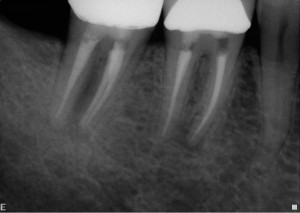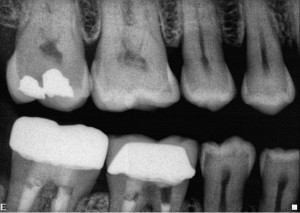I know. I already know. It’s boring, it’s time consuming, it’s unpleasant and no one likes it.
But I love it. Let me back up for just a second.
Prior to initiating endodontic treatment, you need to be able to do two things:
1. Duplicate the patients symptoms
2. Explain the pathophysiology that led to the current condition of the patient
If you cannot do these two things, you have to think long and hard about whether or not you want to initiate treatment. Now there are times where you have no choice. When a patient is in acute discomfort and the pain is escalating, sometimes you have to make your best judgment. But on a daily basis and in the overwhelming majority of the cases in an endodontic private practice this is the way to go.
Patient has a history of pain in the lower right jaw. Pain to heat x 3 weeks. History of root canal therapy in #30 and #31, history of pain to cold in the last week or so. Tooth currently seems to be improving since the last episode of thermal sensitivity. Patient in no immediate distress. Noncontributory medical history.
Tests and Evaluations performed:
Heat
Cold
EPT
Periodontal evaluation
Percussion
Tooth Slooth
Palpation(Coronal and Apical)
Out of all of the tests on tooth 2-5, 27-31, there were only two tests that showed any signs of pathology.
Tooth #29 tests negative to cold and EPT only shows “vibration” at around 75(Max is 80). Tooth #27 and #28 are both rapidly positive to cold and EPT tests around 35.
So tooth #29 is necrotic or at least responds this way. So why not treat?
The fact of the matter is you could treat tooth #29 and you would be justified medicolegally to do so. In addition, I could clearly link the necrosis of the dental pulp in #29 to the thermal sensitivity the patient experienced, the pattern fits.
The problem is that I could not duplicate the symptoms. In addition, there are no restorations on tooth #29. So what killed the pulp?
The bottom line here is you could intervene, but without being able to duplicate the symptoms, you run the risk of treating a tooth and the patient returning with the chief complaint in the near future.
One of the luxuries of endodontic diagnosis is that in most cases, if left untreated, endodontic pathology will focus on the tooth from which it originates. This allows us to be certain that our intervention is directly targeted at the patients primary concern.
First, do no harm.

